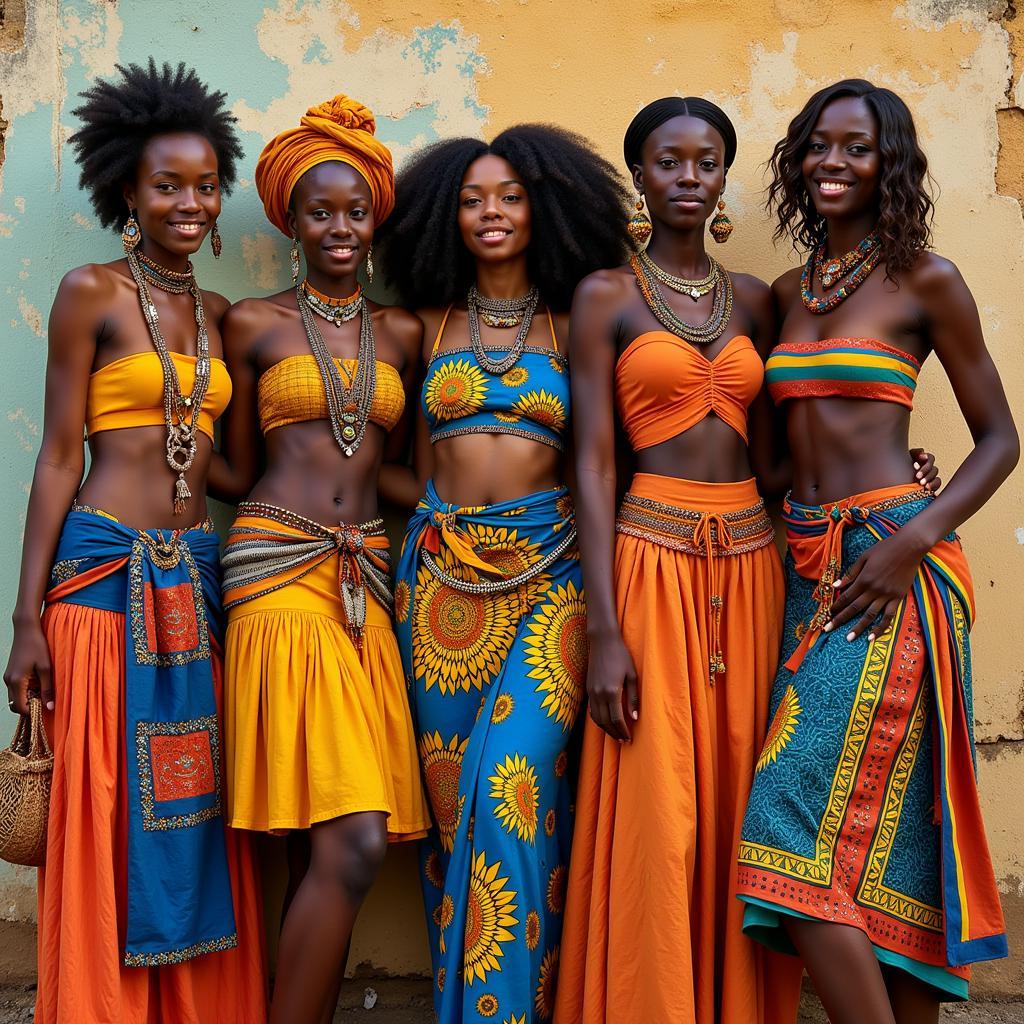Demystifying African Black Soup: A Culinary Journey
African Black Soup, a captivating culinary masterpiece, embodies the vibrant flavors and rich cultural heritage of West Africa. This hearty soup, often referred to as “egusi soup” or “groundnut stew,” transcends its humble ingredients to become a symbol of celebration, community, and nourishment.
What Makes African Black Soup “Black”?
Contrary to its name, African black soup doesn’t always boast a deep black hue. The name originates from the deep green, almost black, color produced by the star ingredient: ground, dried leaves from plants like pumpkin or bitter leaf. These leaves, rich in vitamins and antioxidants, lend the soup its characteristic earthy flavor and velvety texture.
A Symphony of Flavors: Exploring the Key Ingredients
The beauty of African black soup lies in its adaptability. While the core ingredients remain relatively consistent, variations abound depending on the region and cook’s personal touch. Here’s a glimpse into some essential components:
- Ground Leaves: The soul of the soup, these ground leaves provide the base flavor, color, and a hint of bitterness that balances the other ingredients.
- Palm Oil: This vibrant orange oil imparts a unique richness and a subtle nutty aroma to the soup.
- Meat or Fish: From beef and goat to smoked fish or dried prawns, the protein choices add depth and savory notes. Some cooks even use a combination for a more complex flavor profile.
- Aromatic Spices: A medley of chilies, onions, ginger, and other spices infuse the broth with warmth and depth.
- Flavor Enhancers: Fermented locust beans, ground crayfish, or smoked fish add layers of umami, creating a symphony of savory goodness.
Beyond the Bowl: Cultural Significance of African Black Soup
African black soup is not just a dish; it’s a cultural experience. Often prepared for special occasions like weddings, festivals, and naming ceremonies, the soup signifies unity and togetherness. The communal act of preparing and sharing a pot of this flavorful stew reinforces social bonds and strengthens community ties.
“The aroma of black soup cooking fills the air with warmth and anticipation,” shares Abena Asare, a Ghanaian culinary historian. “It’s a scent that evokes memories of family gatherings and celebrations, reminding us of the importance of coming together.”
A Culinary Adventure Awaits: Making African Black Soup at Home
The journey of creating African black soup is an adventure for the senses. While traditional methods involve slow-cooking over an open fire, modern kitchens allow for convenient adaptations. You can find authentic recipes online or explore cookbooks specializing in West African cuisine. Don’t be afraid to experiment with the ingredients and seasonings to create your own unique version!
Frequently Asked Questions about African Black Soup
What does African black soup taste like?
African black soup offers a unique blend of earthy, savory, and subtly spicy flavors. The ground leaves provide a slightly bitter note balanced by the richness of palm oil and the warmth of spices. The addition of meat or fish adds depth and savoriness.
Is African black soup healthy?
Packed with leafy greens, vegetables, and protein, African black soup is incredibly nutritious. The ingredients are rich in vitamins, minerals, and antioxidants, making it a healthy and satisfying meal option.
What can I eat with African black soup?
African black soup is traditionally enjoyed with starchy accompaniments like fufu, pounded yam, African American cornbread, or eba. These side dishes act as a sponge, soaking up the flavorful broth and creating a satisfyingly complete meal.
Delve Deeper into African Cuisine
Craving more insights into the diverse world of African flavors? Explore these related articles:
- African food png
- African chicken peanut soup cooking light
- African foods for weight loss
- African American traditions and holidays
This flavorful journey through African black soup offers a mere glimpse into the continent’s vibrant culinary tapestry. As you savor each spoonful, allow yourself to be transported to the heart of West Africa, where food is more than sustenance—it’s a celebration of culture, community, and life itself.

